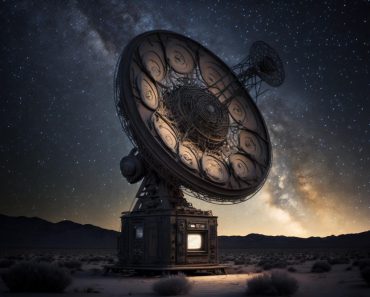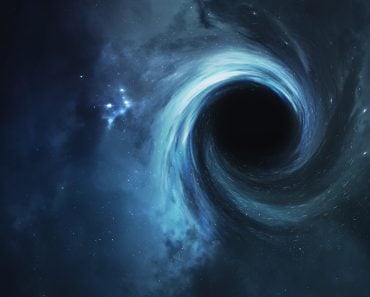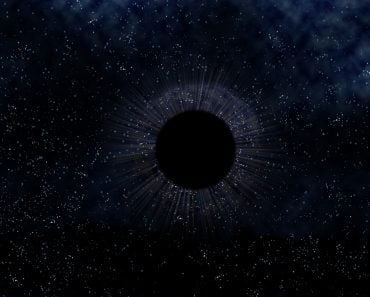Explore the intriguing world of astrophysical jets: their high-energy origins, transformative effects on celestial environments, and their key role in shaping galaxies.
Did you know that there are jets in space that move almost as fast as visible light?
These are called astrophysical jets, which are streams of gas and particles that are ejected from the centers of galaxies, stars, and even black holes. They can travel for millions of light-years and have a lot of energy.
Astronomers are still learning how astrophysical jets are formed and exactly what they do, but one thing is for sure: they are an important part of our universe.
In this article, we will explore the mysteries of astrophysical jets. We will learn about their origins, their properties, and their impact on the cosmos.
Recommended Video for you:
What Are Astrophysical Jets?
Astrophysical jets are highly energetic, narrow streams or beams of matter and electromagnetic radiation ejected from various celestial objects, such as stars, galaxies, and black holes, as well as from exotic astrophysical phenomena, such as Gamma Ray Bursts.
These jets can consist of charged particles, such as electrons and protons, and electromagnetic radiation, like radio waves, X-rays, and gamma rays.

These highly collimated outflows of matter, which can often extend over vast distances, sometimes millions of light-years, significantly affect their surroundings. They can heat and ionize the gas in their vicinity and transport large amounts of matter and energy away from the astrophysical objects with which they are associated, which in turn can have a significant impact on the evolution of the host galaxy or star.
Formation And Mechanism
Despite decades of research, the exact mechanisms responsible for forming astrophysical jets remain subjects of ongoing study. Astronomers are still learning how astrophysical jets are formed, but there are two main theories: the magnetic field theory and the accretion disk theory.
Magnetic Field Theory
This prominent theory suggests that jets are produced by the intense magnetic fields surrounding the astrophysical object. These magnetic fields can be extremely strong and affect the motion of charged particles. When material falls onto a star or black hole, it can create a strong magnetic field. This magnetic field can become twisted and tangled, creating pressure imbalances that drive the material outward. The interaction between magnetic fields and charged particles in the accretion process plays a pivotal role in shaping the jet.
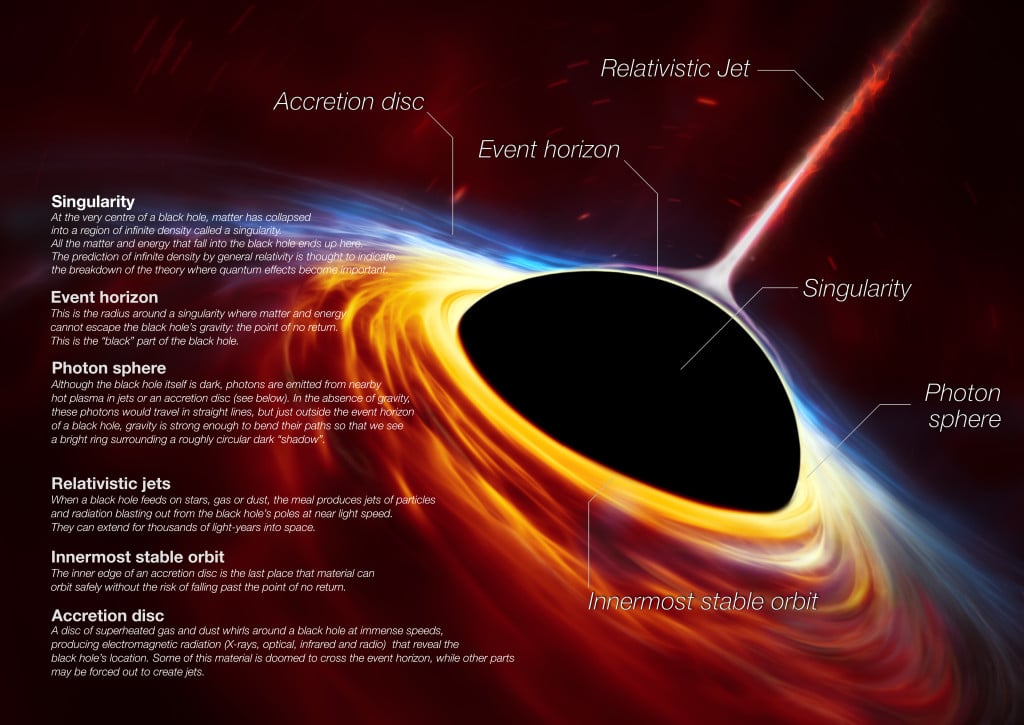
Accretion Disk Theory
Another widely considered theory implicates the accretion disk surrounding the compact object as the origin of the jets. The accretion disk is a rotating disk of gas that gradually falls onto the accreting object due to gravitational attraction. As material in the disk moves, it generates friction and turbulence, which creates magnetic fields. These magnetic fields, in turn, exert forces on the surrounding gas, propelling it outward in the form of a jet.
Types Of Astrophysical Jets
Astrophysical jets come in two primary categories, each with unique characteristics and origins: Relativistic and Non- Relativistic jets. As evident from their names, relativistic effects and the objects they are associated with are the key factors behind this classification.
Relativistic Jets
Relativistic jets are cosmic speedsters that rush through space at velocities approaching the speed of light. They are commonly associated with some of the most energetic objects in the Universe, such as Gamma-ray bursts, microquasars, quasars, and active galactic nuclei (AGNs).
- Gamma-ray bursts are the most energetic explosions in the universe. They can release as much energy in a few seconds as the Sun will release in its entire lifetime. A massive star collapses to cause GRBs.
- Quasars are very distant and bright objects that emit a lot of radiation. Supermassive black holes at the center of galaxies power these unique phenomena.
- Microquasars are smaller versions of quasars. A black hole in a binary star system will accrete material from its companion star to form a microquasar.
- Active galactic nuclei (AGNs) are similar to quasars, but are not as bright and are thought to be powered by supermassive black holes that are actively accreting material.
It is intriguing that these jets may extend for distances up to a few mega-parsecs into the intergalactic medium. Some of them are considered the largest single coherent structures in the Universe.

The driving force behind relativistic jets is the accretion of matter onto supermassive black holes found at the centers of galaxies. As matter spirals into these, immense gravitational energy is released. This energy is then converted into the kinetic energy of the jet material, propelling it outward at tremendous speeds. The energy release is so immense that it can outshine entire galaxies, making quasars some of the most luminous objects ever discovered in the cosmos.
Non-Relativistic Jets
In contrast, non-relativistic jets move at significantly slower speeds, typically up to a few thousand kilometers per second. These jets are frequently associated with young stellar objects.

The driving mechanism for non-relativistic jets is also accretion. Although less powerful than their relativistic counterparts, non-relativistic jets still possess enough energy to significantly impact their surroundings.
Effects Of Astrophysical Jets
Far from being cosmic curiosities, the jets display significant and transformative consequences for their surrounding environments. These effects span various aspects of astrophysics and cosmic evolution. Since these structures can travel far away from their sources, their influence doesn’t remain local.
Heating and Ionization: Astrophysical jets can heat and ionize the gas in their vicinity. This means that they can make the gas hotter and more electrically charged, which can change the way the gas behaves. This phenomenon dramatically alters the physical state of matter in the surrounding region.
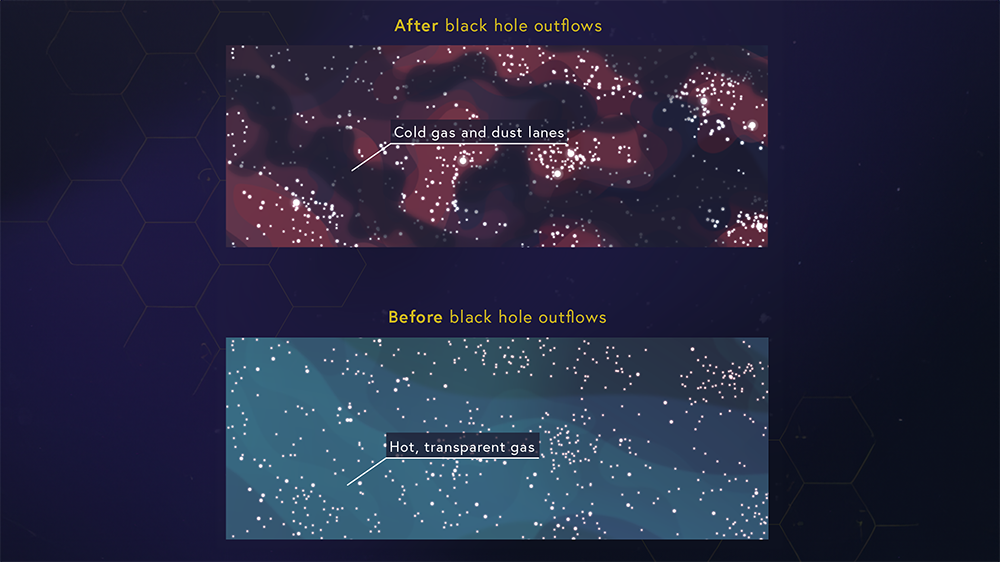
Matter and Energy Transport: These jets can transport matter and energy away from their central objects. This can happen over very long distances, which could affect the evolution of the host galaxy or star.
Nucleosynthesis: As matter spirals into the compact object and is subsequently ejected in the form of a jet, it carries elements synthesized in the intense environments near these cosmic powerhouses. This process, known as nucleosynthesis, is crucial for enriching galaxies with elements beyond hydrogen and helium. These heavier elements are fundamental for the formation of planets and the emergence of life as we understand it.
Role Of Astrophysical Jets In Galaxy Evolution
Astrophysical jets, often associated with supermassive black holes at the centers of galaxies, wield significant influence over the evolution of their host galaxies. This impact relates to several key aspects.
- Regulating Star Formation: Relativistic jets, with high speeds and energies, can heat and ionize the surrounding gas, which can make it more difficult for gas to collapse and form stars. However, it is important to note that black holes can also trigger star formation during positive feedback.

- Feedback Mechanism: The energy released by astrophysical jets can initiate a feedback mechanism on the host galaxy. This feedback mechanism is vital in maintaining a delicate equilibrium between star formation and black hole activity within galaxies. Consequently, it substantially influences these galaxies’ overall size, structure, and composition, ultimately shaping their long-term evolution.

Laboratories For Fundamental Physics: Astrophysical jets are extraordinary natural laboratories for exploring fundamental physics under extreme conditions. The high velocities and intense magnetic fields within these jets provide unique insights into particle acceleration mechanisms, relativistic effects, and the behavior of matter in the universe’s most extreme environments.
Observational Insights And Simulations
Since we already saw a number of images above, it is clear that these jets have been probed through telescopes. This is possible because these energetic beams of matter emit a variety of radiation. For example, the Event Horizon Telescope Collaboration, the one that made it possible to get an image of the black hole shadow, uses observations from a worldwide network of radio telescopes. Jets can also emit Gamma rays, which can be captured and studied via the Fermi Space Telescope.

The study of astrophysical jets often involves intricate computer simulations. These simulations allow researchers to recreate and explore the dynamics of these jets, including the behavior of particles, magnetic fields, and radiation. Through simulations, scientists can test hypotheses, refine theories, and better understand the complex physical processes at work within astrophysical jets. Famous examples of these simulations are BHAC, HARMPI, Athena++, MAD, SANE, etc.

Astrophysical jets stand as a testament to the complexity and wonder of our Universe. These phenomena, powered by the gravitational energy of compact objects, have far-reaching consequences, from regulating star formation to distributing heavy elements and serving as laboratories for studying fundamental physics. Relativistic jets associated with high-energy astrophysical components can have speeds nearly equal to the speed of light, which tempts astronomers to study this eye-catching concept even more deeply.
While many aspects of astrophysical jets remain shrouded in mystery, ongoing research promises to illuminate their secrets further, enriching our understanding of the cosmos and our place within it.
References (click to expand)
- Astrophysical jets and outflows.
- Frank, J., King, A.,& Raine, D. (2002). Accretion Power in Astrophysics. Cambridge University Press
- De Young, D. S. (1991, April 19). Astrophysical Jets. Science. American Association for the Advancement of Science (AAAS).
- OS Salafia. (2022) [2206.11088] The Structure of Gamma Ray Burst Jets.
- OS Salafia. (2022) [2206.11088] The Structure of Gamma Ray Burst Jets.



